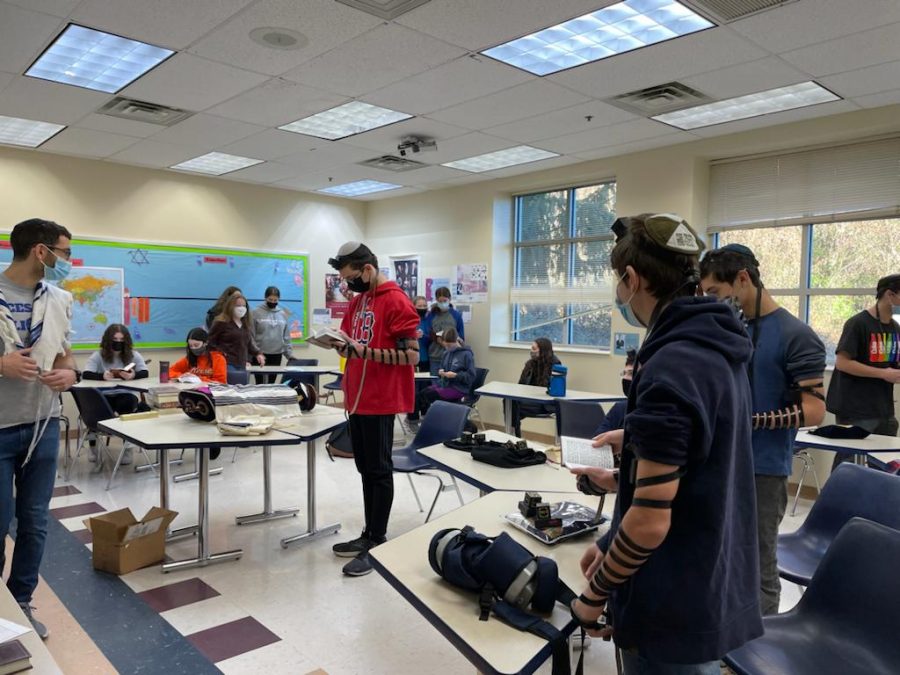Partnership Minyan paves the way to student excitement
December 2, 2021
Participants of the newly created Partnership Minyan are happy with its unique format. High school math teacher Robert Shorr has recently brought the new Zman Kodesh option to CESJDS. It is a traditional Orthodox Shacharit service with separated gender seating and encourages male students to wear tefillin. However, there is no physical mechitzah, the dividing wall used in Orthodox services, and women can lead prayers and read Torah.
Zman Kodesh, or “Holy Time,” is a period of the morning dedicated to prayer or a similarly meaningful activity. Students are given many different Zman Kodesh options to fit their religious observance or preference, including meditation, art or prayer.
Shorr had been thinking about creating the Partnership Minyan for several years, but was forced to delay it because of the pandemic.
“I wanted a minyan that had tefillah every day, and that had a very traditional liturgy and didn’t skip things or change things, but was mostly egalitarian,” Shorr said. “Something [in between] the Mehitzah and Masorti minyan.”
The minyan began on a trial basis, only meeting twice a month. The students’ feedback was very positive, and it moved to a daily option in late October 2021. Freshman Josie Silverberg was a big supporter of the minyan because she wanted an Orthodox space with an opportunity for female engagement.
“I am part of the Orthodox community, and I felt like the Mechitzah [Ashkenazi] Minyan alienated women,” Silverberg said. “Everyone is much more included [in Partnership], and both genders are getting aliyot and participating equally. It’s been really great having that.”
The minyan is held in a high school classroom, promoting a very close relationship between the members. Shorr and the members have found the tight-knit atmosphere to be a significant aspect that is not found in other prayer minyans. For Silverberg, the intimate atmosphere is one of her favorite aspects of the minyan.
“The first time Mr. Shorr sent out an email that we need people to sign up for leyning [reading the Torah], and I was able to. That felt like I was being heard, and it was really important to me,” Silverberg said.
The service is dependent on student leadership and commitment to prayer. Sophomore Simon Reich finds these opportunities to be very valuable. He believes that the minyan does not pressure students to lead, and he can take prayer at his own pace.
Shorr personally reached out to some students he noticed were having trouble engaging in the Mechitzah Ashkenazi Minyan to propose the Partnership Minyan. He sees the positive impact this has made on the religious lives of students.
“Kids have come up to me and said, ‘Mr. Shorr, this minyan is the best thing that’s ever happened to me. I finally feel Jewishly fulfilled at JDS,'” Shorr said. “And other teachers have heard kids talking about it positively in the halls or other classes and told me.”
Reich attributes a part of the success to Shorr’s engagement and support. He feels that he has connected well with the students.
“Everybody loves Mr. Shorr. The minyan is three or four weeks old, and it feels like it’s been here forever,” Reich said. “There is a sense of legitimacy, especially from having a teacher who clearly cares about what he is doing.”







